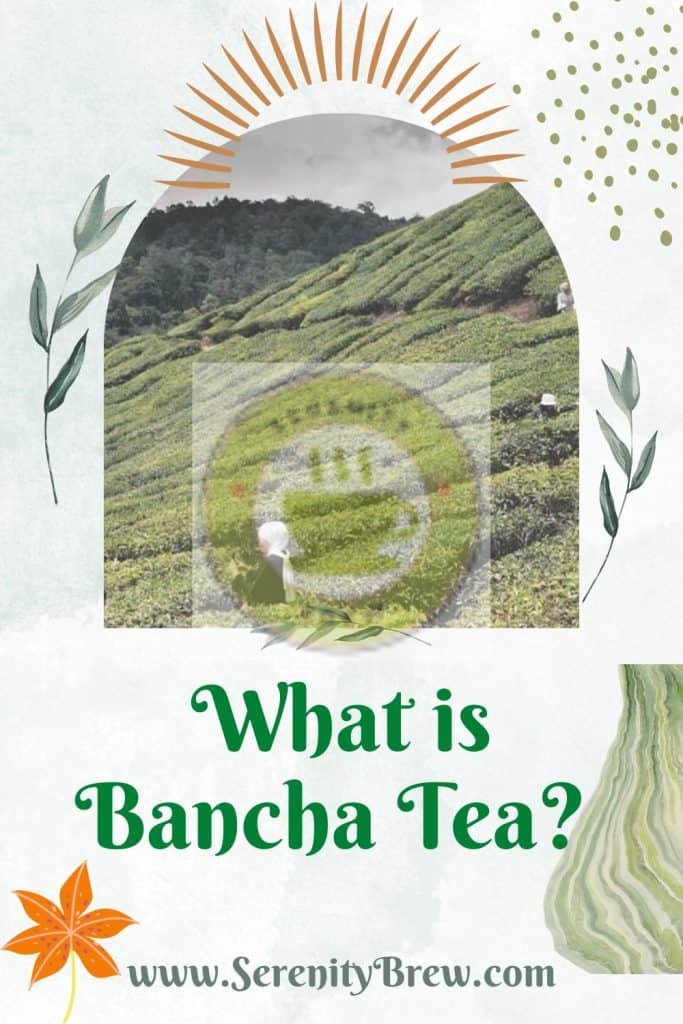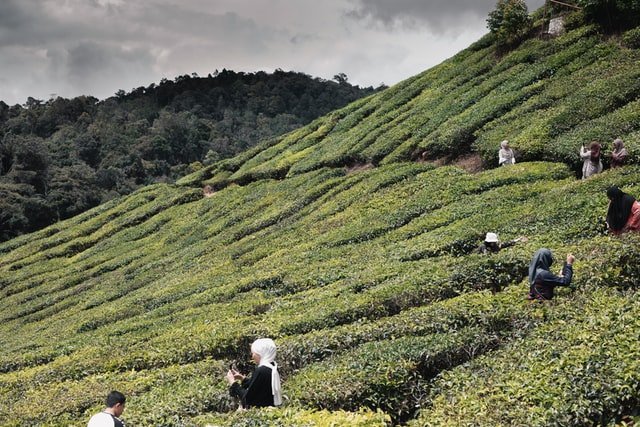
Bancha tea is one of those most consumed teas in Japan.
What is it that makes it so appreciated in Japan that it is the drink served in restaurants to its guests, while they wait to be served?: a symbol of respect, as is customary in the Japanese country.
Japanese teas and coffee country par excellence, which is slowly beginning to discover the fabulous world of infusions and teas.
But being Europeans, the best known teas, and therefore, consumed are the black teas that the English have made us so fond of.
Japanese teas are mostly green teas. They are softer and more delicate teas than black teas and are the great favorites in Asian countries.
Within Japanese teas there is a great variety of classes: Matcha, Gyokuro, Sencha, Gebalong, Genmmaicha, Kokeicha, Kukicha, Sincha, Amacha, etc.
All of them unique and different and the most surprising thing, all of them from the same plant, the Camellia Sinenesis.
Bancha is a clear example that good things are not always expensive, since it is one of the cheapest Japanese teas on the market and at the same time the most consumed in its country of origin.
The three main reasons why we do not know Bancha tea are:
1.- It is a Japanese green tea. What makes it exotic and unknown
2.- It is one of the cheapest Japanese teas. It doesn’t have the marketing of Matcha or Gyokuro as you don’t get as much margin on sales.
3.- Since it’s cheap, well…it won’t be good! Typical current thinking in the face of ignorance of a product.
What is Bancha tea?
Bancha Green Tea is a tea of Japanese origin, prepared from the leftover leaves of the first harvests or with the late autumn shoots of the tea plant, Camellia Sinensis.
From the leftover leaves or late autumn shoots means, it indicating that the best leaves of the tree are not used, but It indicate that it is not a by-product.
You will understand very quickly. The most beautiful apples are dedicated to their sale in the greengrocer and the ugliest apples to make cider.
And how good is the cider! The “table” apples it would not have that delicious flavor.
Well, the same thing happens to the Bancha! The process of it makes it different and fabulous and since it is made with leftover leaves and late buds, there is enough of it at low prices to give a cheaper tea than its cousins Gyokuro or Matcha.
Once again, the clear example of how the Japanese have made an art out of scarcity (of tea plants).
To make it, the tea leaves are collected, go through a mechanical selection process where the stems and twigs are separated from the leaves.
The tea leaves are steamed and then dried.
With the aim of obtaining the perfect drying, they are later stored in bags for 3 years to achieve their aging (hence the name of three-year-old tea).
Its flavor is much stronger than any other of the green teas and its aroma is somewhat reminiscent of fresh field grass. It is curious that, despite the aforementioned flavor, it is one of the green teas with the least caffeine. It is very cool.
Tea Bancha and Kukicha
There is the confusion of considering that Kukicha teas and Bancha teas are the same type of tea, but it is not true because although they both come from the same plant and the same production process.
The Kukicha is the part that has a higher proportion of petioles than of leaves and since it has fewer leaves it has a lower content of teina since it is in them where it accumulates. It also has a higher tannin content because it has more wood than Bancha.
Only by its appearance we realize that they are not the same. Bancha tea has large, long and pressed leaves, while kukicha has small pieces of stems and short petioles.
Bancha tea has a higher theine content than kukicha and has a less astringent taste than it.
How to prepare Bancha tea?
For optimal results, use about 3 grams per cup in mineral water at about 80 and 90 °C. It is infused between 1.5 and 2 minutes (if it is cooked more, or at a higher temperature, a bitter infusion is obtained, as with all green teas).
It is common to make two infusions with the same threads.
If you prepare it in a teapot, we recommend that you pre-heat the teapot and the cups and serve the cups alternately. Don’t pour all the tea into one cup and then the other because the second cup will be more concentrated than the first.
Te Bancha properties
Bancha tea, like all green teas, is rich in flavonoids, especially in Catechins. It is also a tea with low theine content and medium astringency.
The main properties of Bancha tea are:
Antioxidant: it has a large amount of polyphenols, green tea has a great capacity to protect the body against free radicals. It is a good ally in the fight against cancer and degenerative diseases.
Helps lower cholesterol: It favors the elimination of LDL cholesterol (the bad one) and on the other hand it can increase the HDL (the good cholesterol). It also helps fight triglycerides. Cardiovascular diseases will also benefit from its anti-thrombotic or clot-fighting effect.
Prevents hypertension: People who already have hypertension and are very sensitive to caffeine should ask their doctor or specialist about their particular case before deciding to take it.
Lowers glucose levels: by regulating insulin levels.
Stimulates: its caffeine content stimulates you.
Avoid fluid retention: diuretic action eliminates fluids and also toxins purifying the body.
Help to tan and protect the skin against damage caused by the sun.
It is a mild bronchodilator that helps relieve cases of asthma, bronchitis and emphysema.
Its contribution of fluorine and its Bioflavonoids help us to prevent the appearance of cavities. It is also effective in treating halitosis.
tea bancha theine
Like all teas, it contains theine, an alkaloid that is produced in the roots of plants and accumulates in the leaves. However, its level is among the lowest of the green teas.
As it has a low level of protein and, on the other hand, is very rich in minerals and vitamins, it is highly recommended for children, the elderly and the sick. It can also be drunk during the day, cold or hot, because not only will we hydrate with the water, but we will also benefit from its nutrients.
Bancha tea to lose weight
There are multiple reasons to use bancha tea as a drink that helps us lose weight or supplement our diet.
Tea has no calories:
It is a drink that does not have fats and only carbohydrates, we can say that it is a drink with zero calories as long as you do not add sugar.
Therefore, it does not add calories to your diet.
It is satiating:
Every time you drink a cup of tea you are adding about 250 ml of hot water to your stomach with the double effect of filling your stomach without calories and hydrating you.
In addition, hot water satisfies hunger.
It is diuretic:
Tea has diuretic properties that help you with fluid retention problems and not look like you’re bloated all day.
It has thermogenic properties:
According to a study green tea has thermogenic properties and promotes fat oxidation.
By consuming green tea you increase thermogenesis or the rate at which your body burns calories daily and therefore helps you lose weight by burning fat up to 4 times faster than usual.
All of them, together with a balanced diet and moderate exercise, make tea help you lose weight and maintain your ideal weight.
Conclusions

Bancha tea, also called three-year tea, is a Japanese green tea with a stronger flavor than any other type of green tea and an aroma that is somewhat reminiscent of fresh field grass.
It is a widely consumed tea in Japan, although it has a very reasonable price for a Japanese tea.
Although it tends to be confused with kukicha tea because the two teas come from the same tree and such a manufacturing process, its unmistakable long, wide and flat leaves have nothing to do with the short stems of kukicha.
Bancha tea stands out for its intense flavor and its low level of theine, making it an ideal tea for losing weight.
Its preparation is very simple, it is enough to infuse for a minute and a half or two minutes about 3 grams of strand at 80-90ºC to obtain an incredible cup of green infusion.
Without a doubt you should take it or at least know it.
